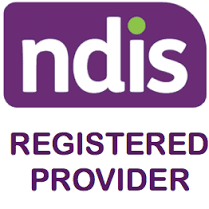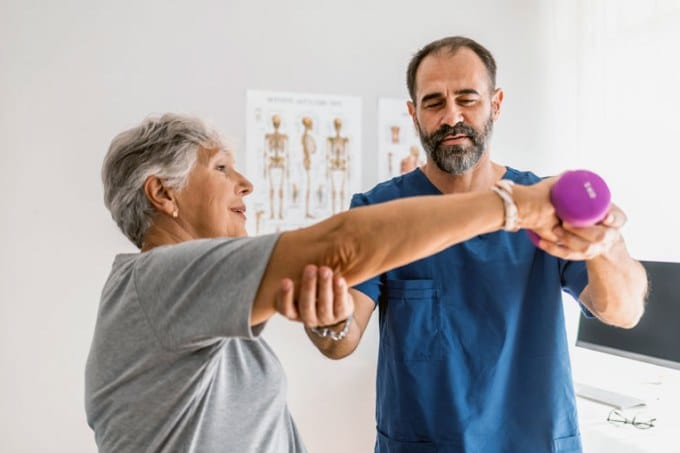Physiotherapy after stroke : Stroke is one of the most common brain injuries, occurring when blood flow to a part of the brain is disrupted. This interruption prevents oxygen from reaching brain cells, leading to their death. As brain cells die, brain function becomes impaired, sometimes even bringing life-threatening consequences.
A stroke is considered a medical emergency, as immediate intervention is necessary to prevent serious complications from the loss of brain cells. Delayed treatment can result in further brain cell damage, which can lead to more severe, lasting impairments. Physiotherapy is one of the most effective methods for rehabilitation after a stroke.
After a stroke, once immediate treatments have stabilised the patient and symptoms are managed, physiotherapy becomes essential for recovery. Through physiotherapy, patients can improve their physical condition, regain mobility, and perform daily activities with greater independence. In this article, we will discuss physiotherapy as a treatment for stroke and its benefits.
A stroke occurs when blood flow to a part of the brain is reduced or blocked, depriving the brain of the oxygen and nutrients it needs. This leads to the rapid death of brain cells within minutes.
While the mortality rate from stroke is relatively low, effective treatment can significantly reduce its lasting effects.
Types of Stroke
Generally, strokes are classified into two main types:
Ischemic Stroke: This type occurs when a blood clot obstructs blood flow to the brain.
Hemorrhagic Stroke: This type occurs when a blood vessel in the brain ruptures, causing bleeding in surrounding brain tissue.
Some common symptoms of a stroke include:
- Weakness or numbness on one side of the body
- Difficulty walking or loss of balance
- Sudden headaches and dizziness
- Vision problems, such as double vision or blurred vision
- Difficulty speaking
- Reduced level of consciousness
- Lack of coordination in limb movements
Physiotherapy after stroke can help manage the symptoms and complications of a stroke.
Causes of Stroke
Factors that increase the risk of stroke include:
- Ageing
- Obesity
- Lack of physical activity
- Unmanaged cardiovascular diseases
- High cholesterol
- Alcohol or tobacco use
- Hypertension
- Pre-existing conditions like diabetes
Stroke survivors may experience a range of complications:
- Temporary or permanent paralysis
- Muscle atrophy
- Brain swelling
- Speech impairments
- Swallowing difficulties
- Walking and movement issues
- Loss of bladder or bowel control
- Depression
- Memory and cognition issues
Physiotherapy can significantly help to mitigate many of these effects.
Physiotherapy after stroke
Physiotherapy is one of the most effective treatments following a stroke. By using a tailored approach based on the type and severity of the stroke, as well as the patient’s age, physiotherapists design exercises and rehabilitation activities that restore movement, reduce pain, and improve overall physical function.
With physiotherapy sessions, patients learn to use their limbs more effectively, allowing them to rely less on others for daily tasks. Physiotherapy also addresses joint flexibility, prevents stiffness, strengthens weakened muscles, and optimises the patient’s physical condition. Patients are also taught to use assistive devices, such as canes and wheelchairs, to enhance their mobility and safety.
The importance of physiotherapy after a stroke
After a stroke, the nervous system loses its ability to control movements accurately. Physiotherapy helps re-establish this control by guiding neural plasticity, where the brain reorganises itself to restore lost functions.
Early intervention with physiotherapy can prevent joint stiffness and muscle shortening caused by immobility. Every stroke patient requires a personalised approach to physiotherapy based on their unique needs.
Physiotherapists, with expertise in neuroanatomy, neurophysiology, and neuroscience, can design treatment plans and exercises that best suit each patient’s recovery.
How Does Physiotherapy Aid Stroke Recovery?
Although the damaged brain cells do not regenerate, the brain has the potential to recover lost functions by reorganising surviving cells, a process known as neuroplasticity. Physiotherapy facilitates this reorganisation, allowing patients to regain motor functions with guidance from physiotherapists.
In addition to providing physiotherapy sessions, physiotherapists play an essential role in the following ways:
Developing personalised care plans to prevent complications that could slow recovery.
Advising on correct posture when sitting or lying down, and guiding movement patterns.
Determining appropriate times for the patient to begin walking and using mobility aids.
Encouraging patients to actively participate in therapy sessions, allowing the brain to relearn natural movement patterns.
Working with family members and a rehabilitation team to support recovery.
Offering advice to patients and their families on proper movement techniques and activities.
When to Start Physiotherapy after stroke
Within 24 hours of a stroke, patients are encouraged to move, even if it’s as simple as sitting on a chair. Early movement reduces the risk of complications and helps the patient retain their mobility. As the patient’s recovery progresses, physiotherapy shifts focus towards improving independence and enabling the patient to perform more complex tasks.
Stages of Physiotherapy after stroke
For effective stroke recovery, physiotherapy generally involves the following stages:
Initial Assessment and Care: Upon arrival, the physiotherapist assesses the patient’s condition to identify movement issues. Early care prevents joint stiffness and muscle spasms, and positions are adjusted to improve comfort and stability.
Using Physiotherapy Equipment: While many stroke survivors regain walking ability, others may need to use wheelchairs. The physiotherapist evaluates each patient’s needs and prescribes suitable equipment, such as walkers, canes, and ramps, as necessary.
Restoring Mobility: After the patient’s condition stabilises, the physiotherapist introduces targeted exercises to gradually rebuild movement skills. Assisted standing exercises allow the patient to bear weight and strengthen muscles.
Rehabilitation Exercises: Patients are often required to perform specific exercises to regain mobility skills. Exercises are tailored to each individual—whether it’s improving hand movement, enhancing balance, or facilitating walking.
In conclusion, physiotherapy plays an integral role in stroke rehabilitation. Early and consistent physiotherapy intervention helps patients regain independence, strength, and quality of life, allowing them to resume daily activities with greater ease.


